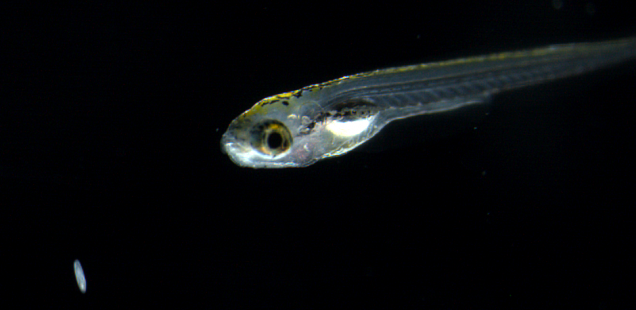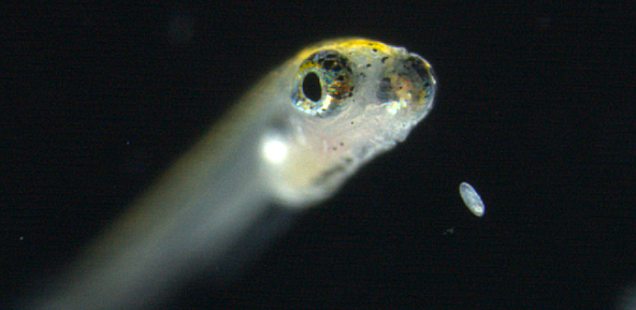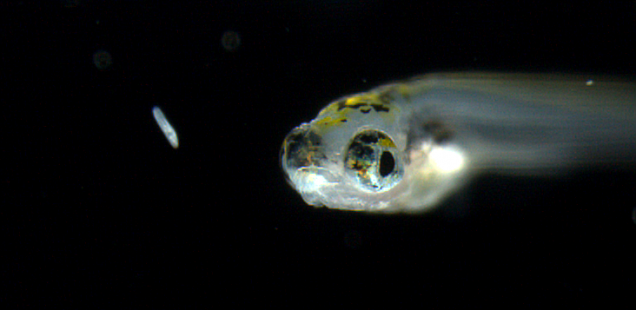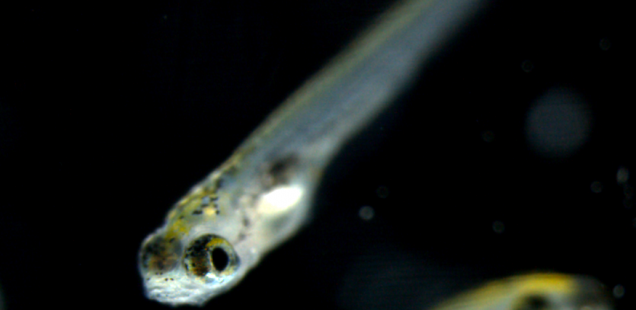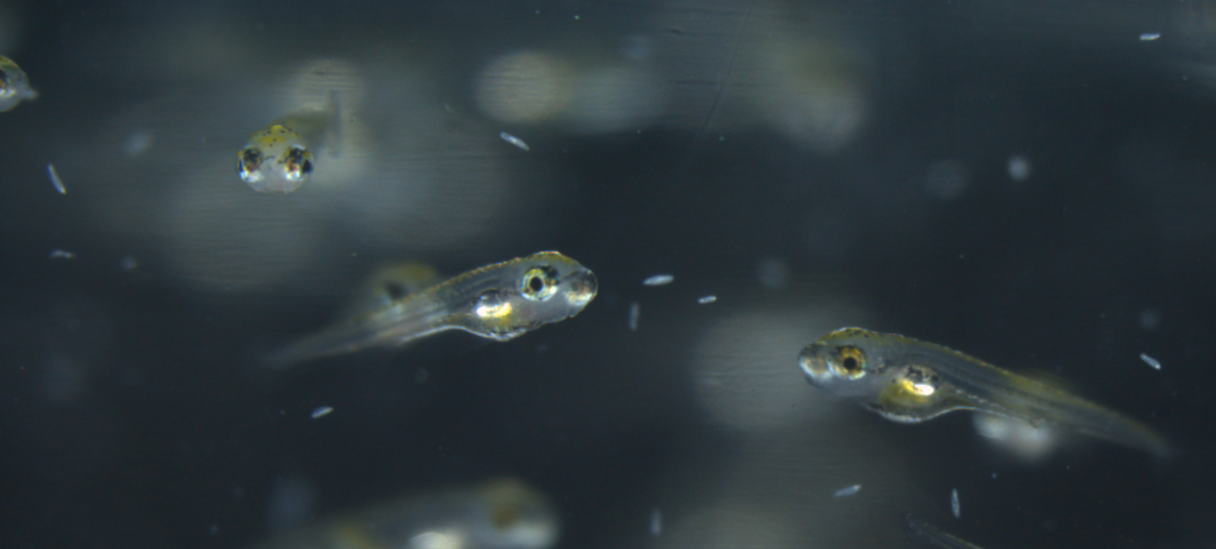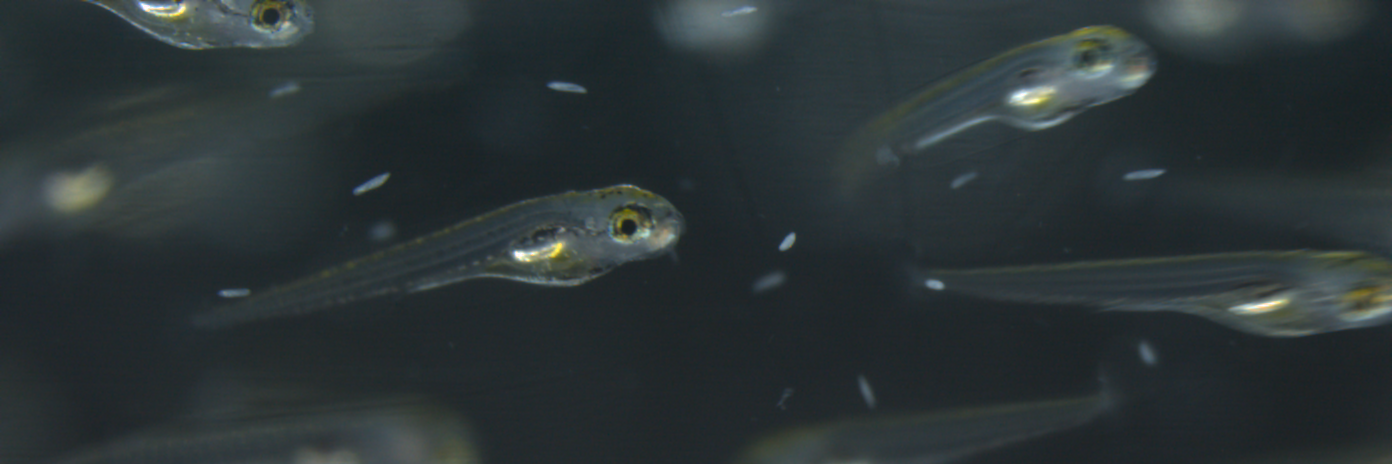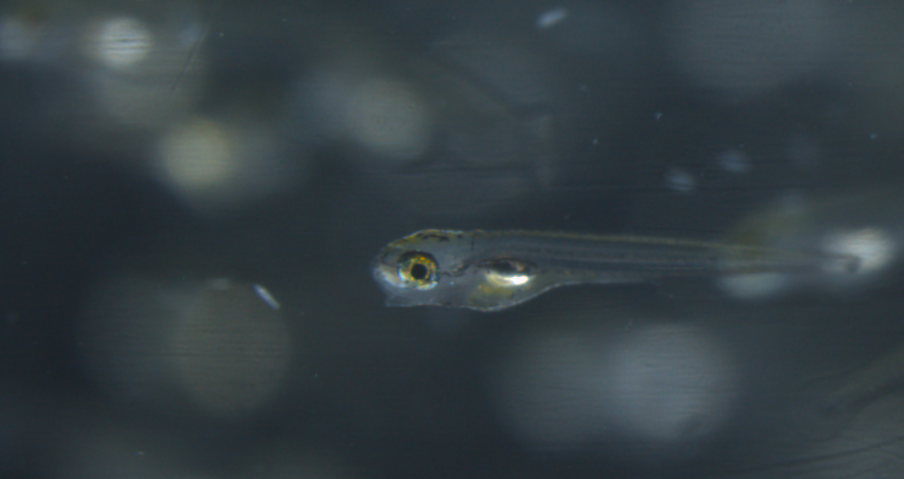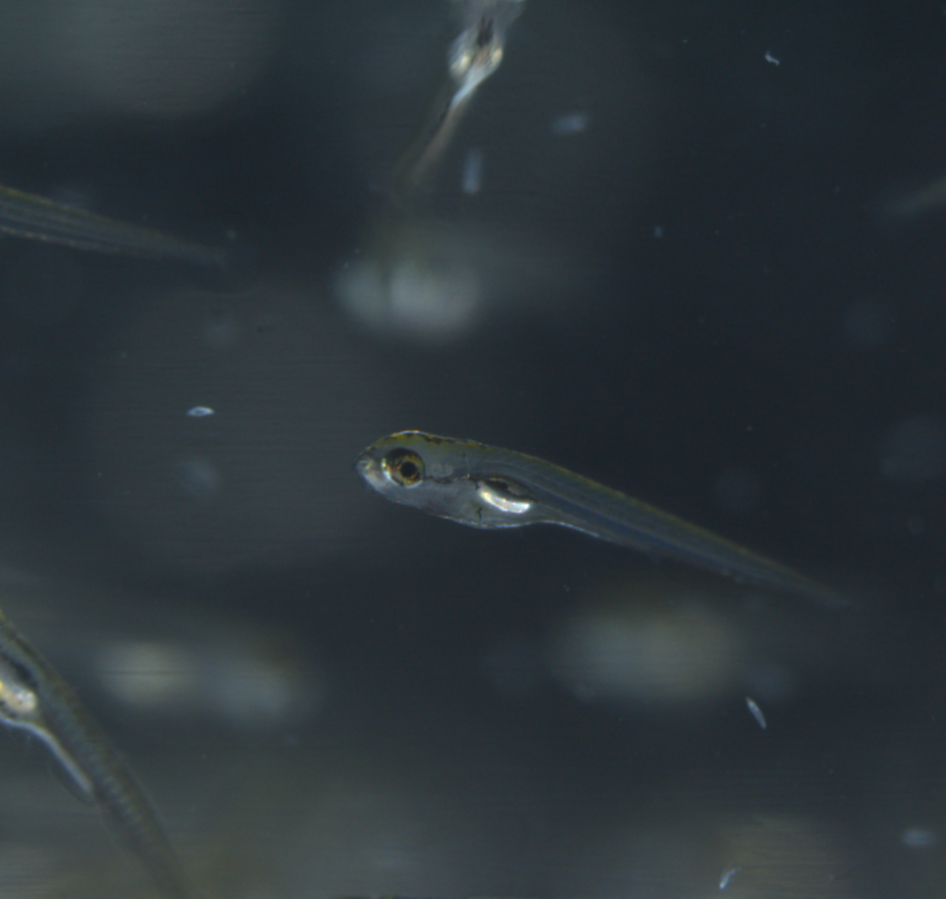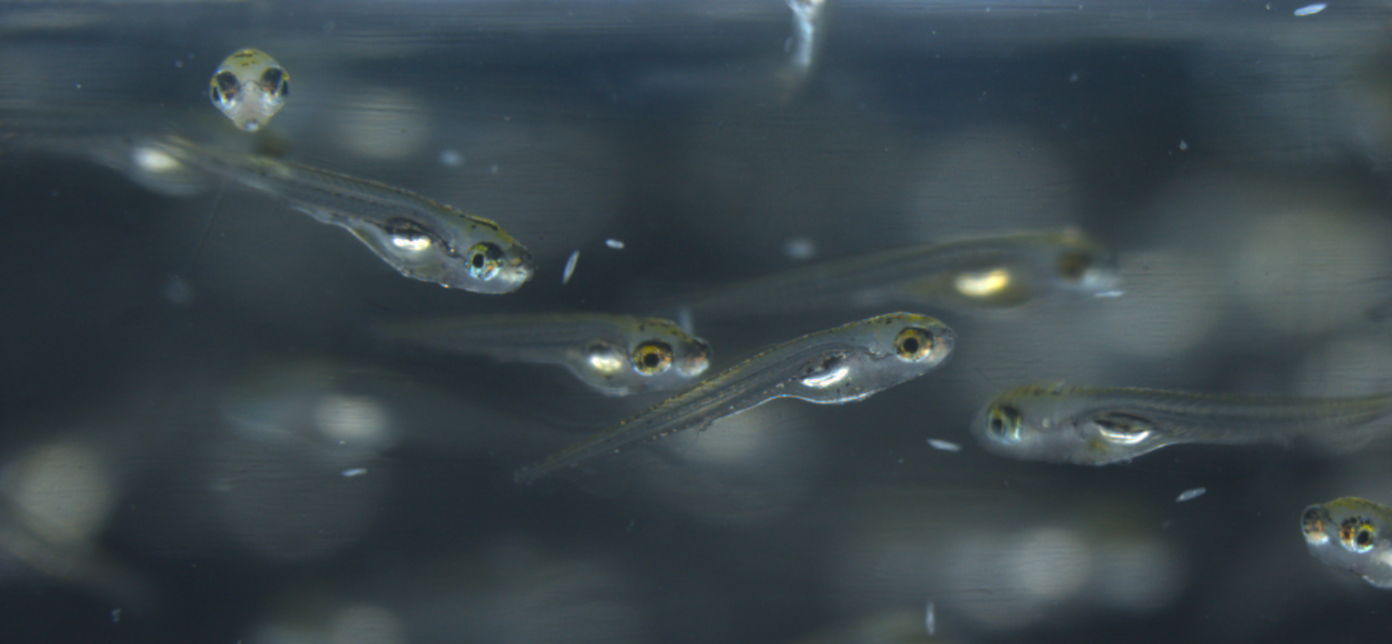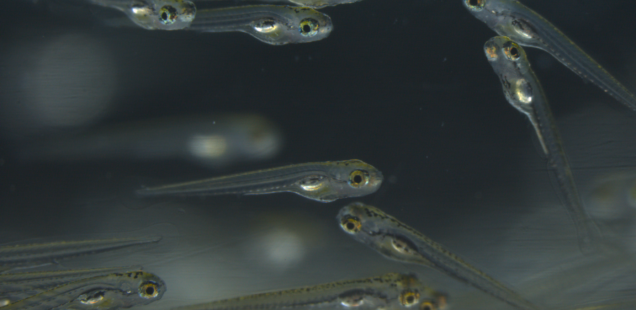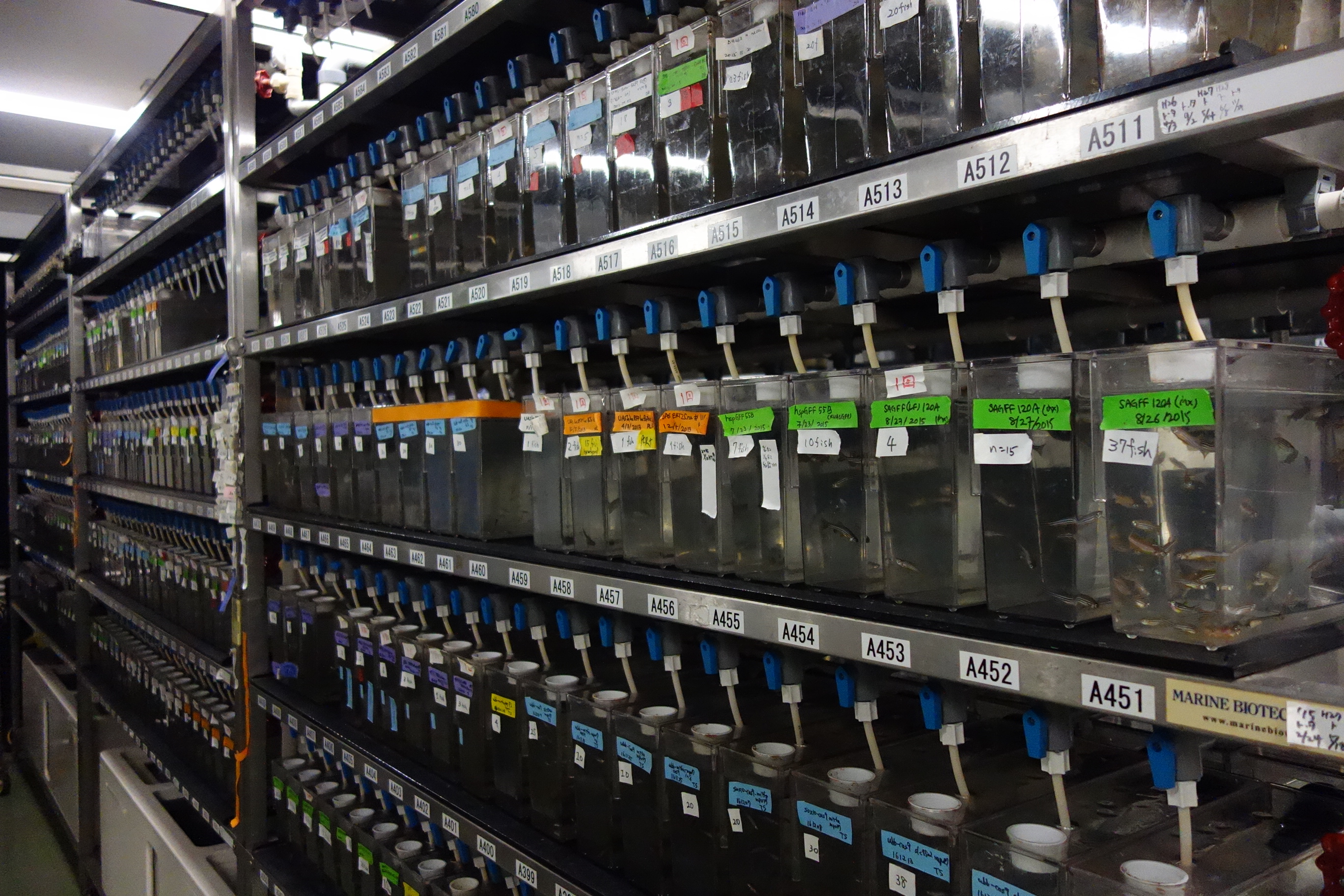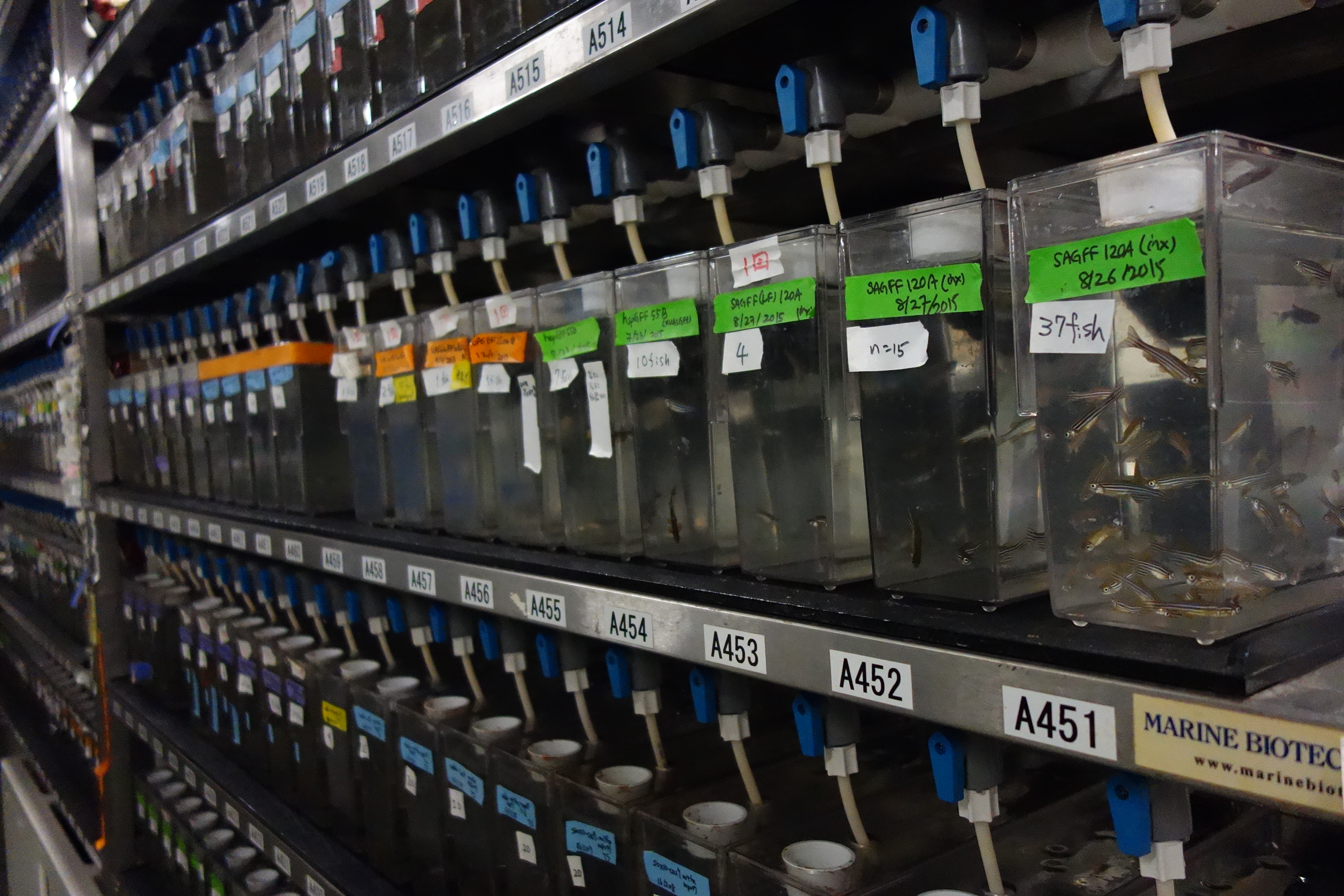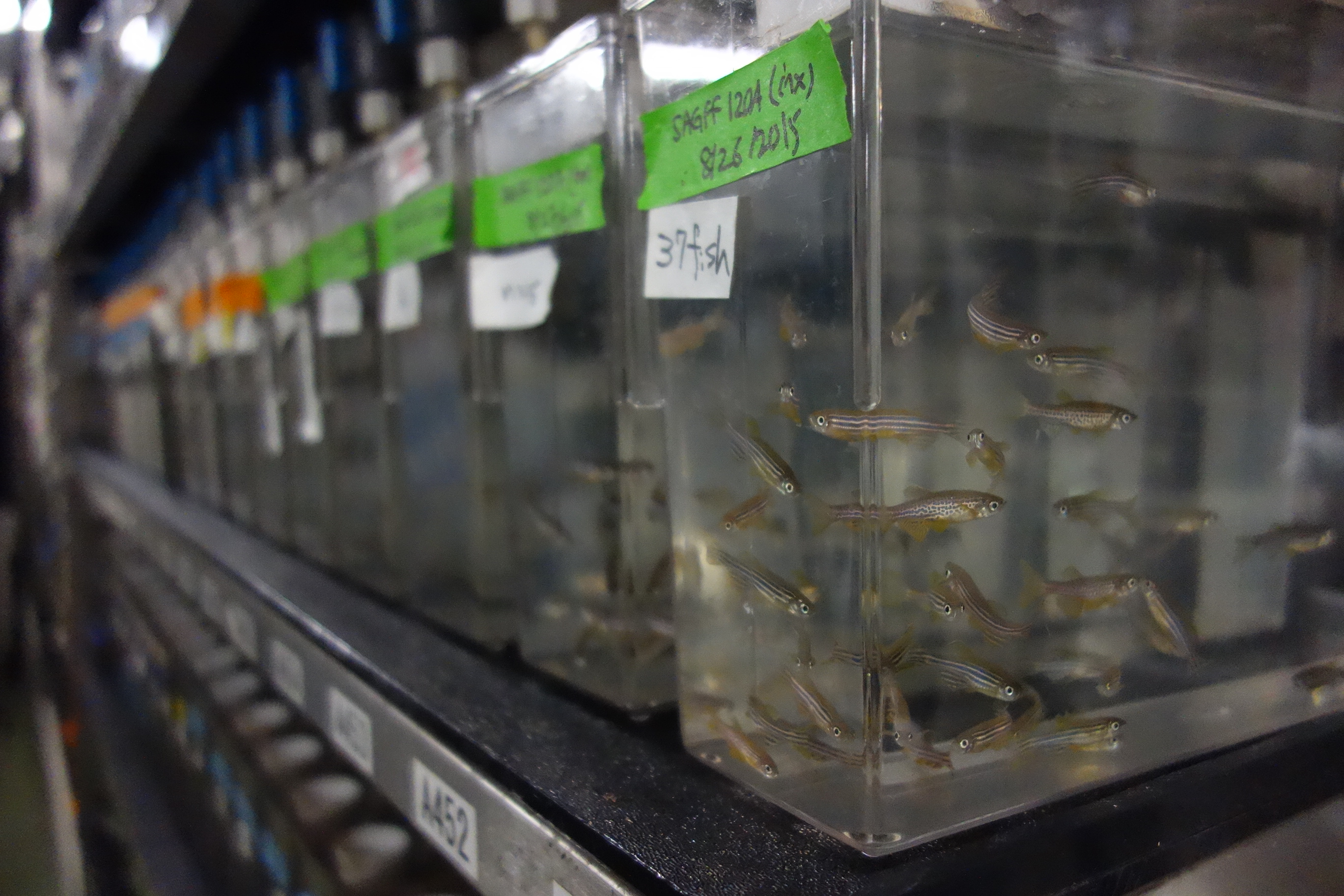All the following pictures can be used under CC BY 4.0. Credit should be given to the National Institute of Genetics (©National Institute of Genetics).
One week old zebrafish larva trying to catch the prey (a paramecium)
Photography
- Date: 20170414
- Microscope: Leica MZ16FA
- Camera: Leica DFC300FX with an acquisition software, LAS (Leica Application Suite) 4.9
- Exposure time: 5 ~ 20 ms. Zoom: 20x~30x
- Zebrafish larvae: 6 day and 7 day post-fertilization
- Set-up: Larval zebrafihs were put in a disposable cuvette (Parafilm was used to close the opening) with paramecia. A mirror was placed at 45 deg next to the cuvette so that side view of the zebrafish larvae in the mirror can be observed with the (upright) stereo microscope.
- Lighting: Dark-field illumination using a ring LED (CCS Inc.). LEDs facing up. With a diffuser (circular shaped with an opening at the center).
- Image processing: Cropping, contrast adjustment, sharpening were done in ImageJ.
Five day old zebrafish larvae and paramecia
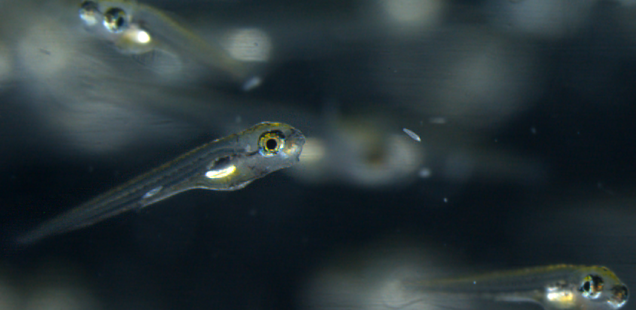 With its mouth wide open, 5 day-old zebrafish larva is about to catch the prey (a paramecium).
With its mouth wide open, 5 day-old zebrafish larva is about to catch the prey (a paramecium).
Photography
- Set-up: Zebrafish larvae were put in an acrylic box.
Adult zebrafish
Here are some pictures of adult zebrafish. Females look yellowish and males look pinkish.
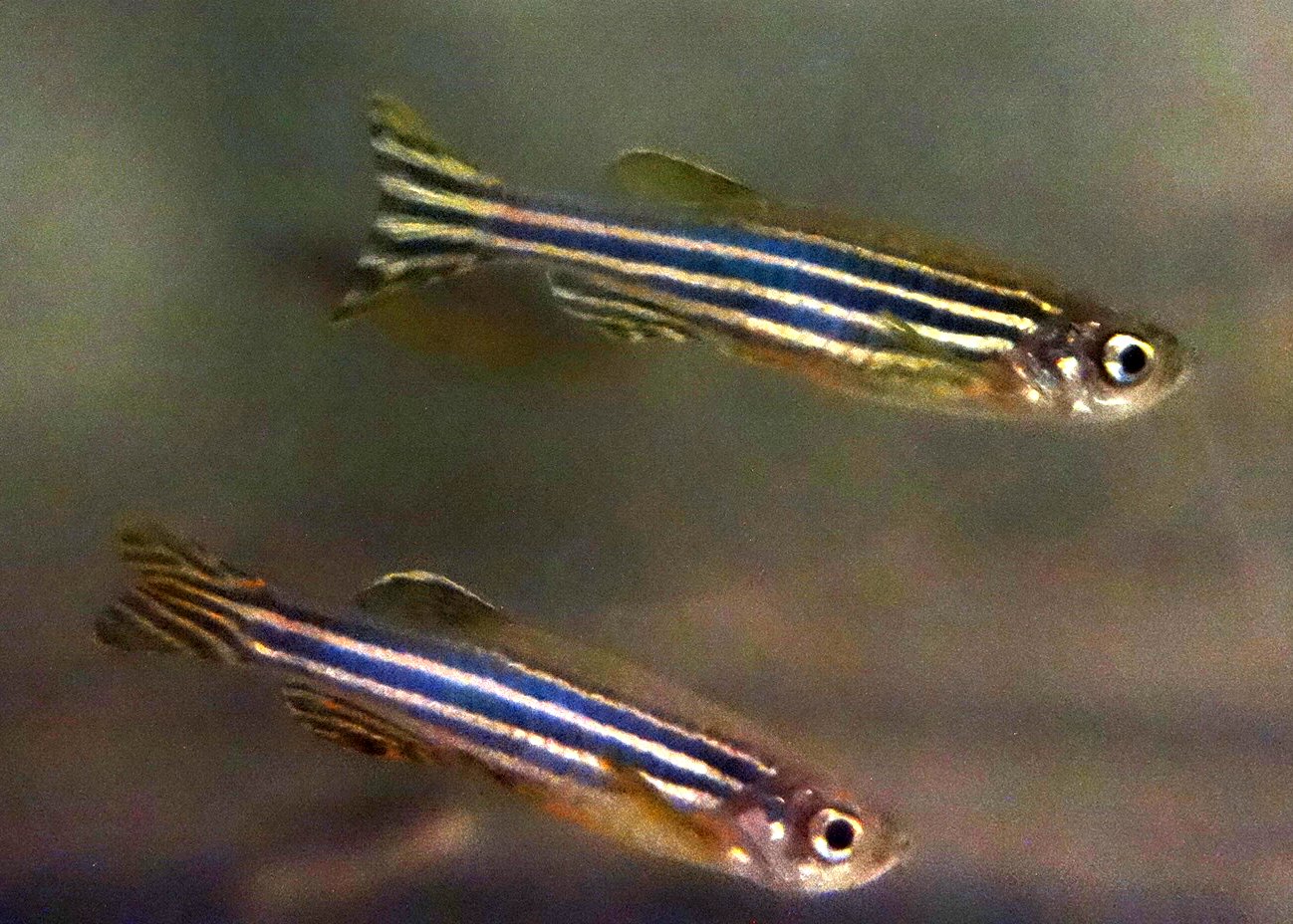
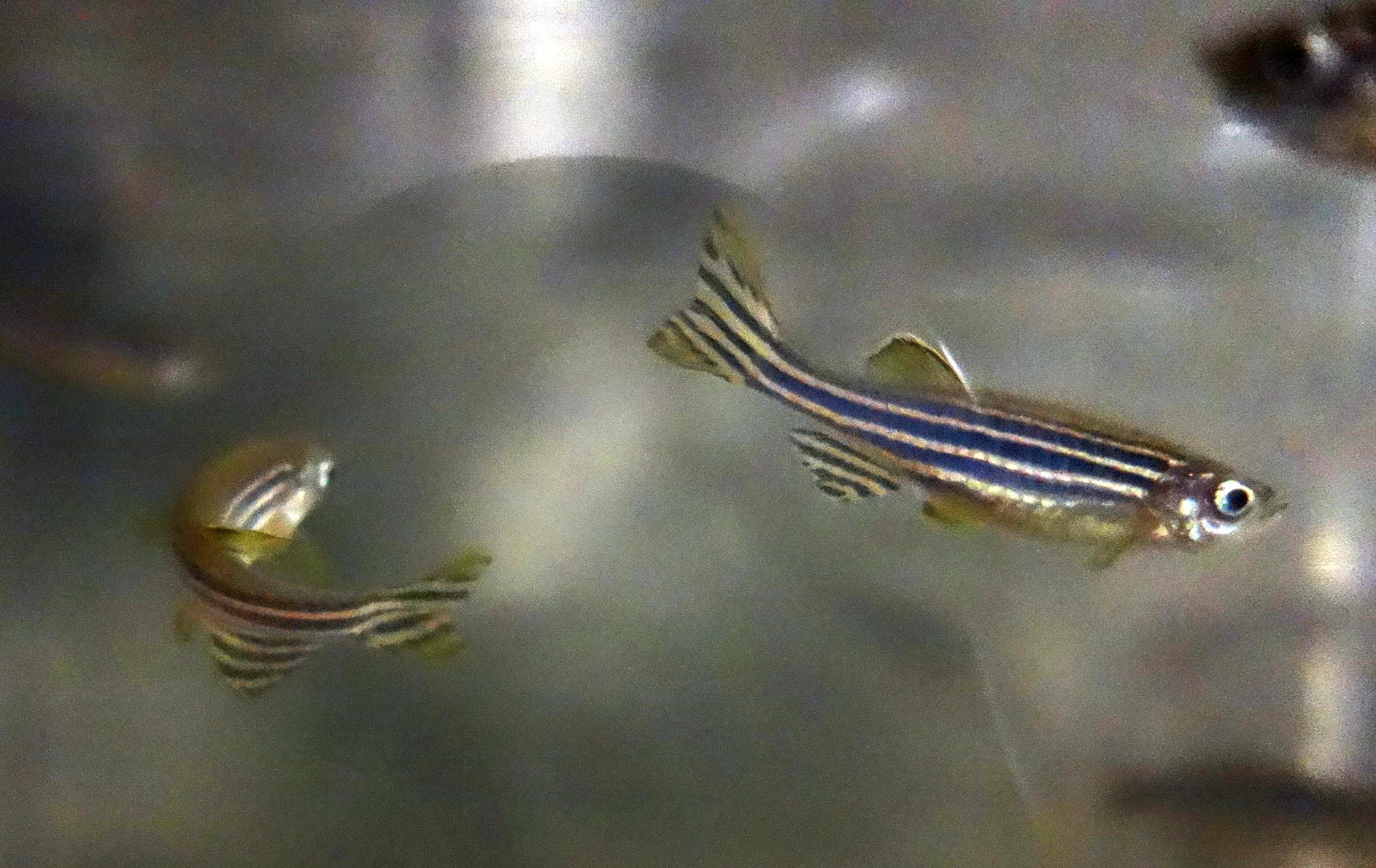
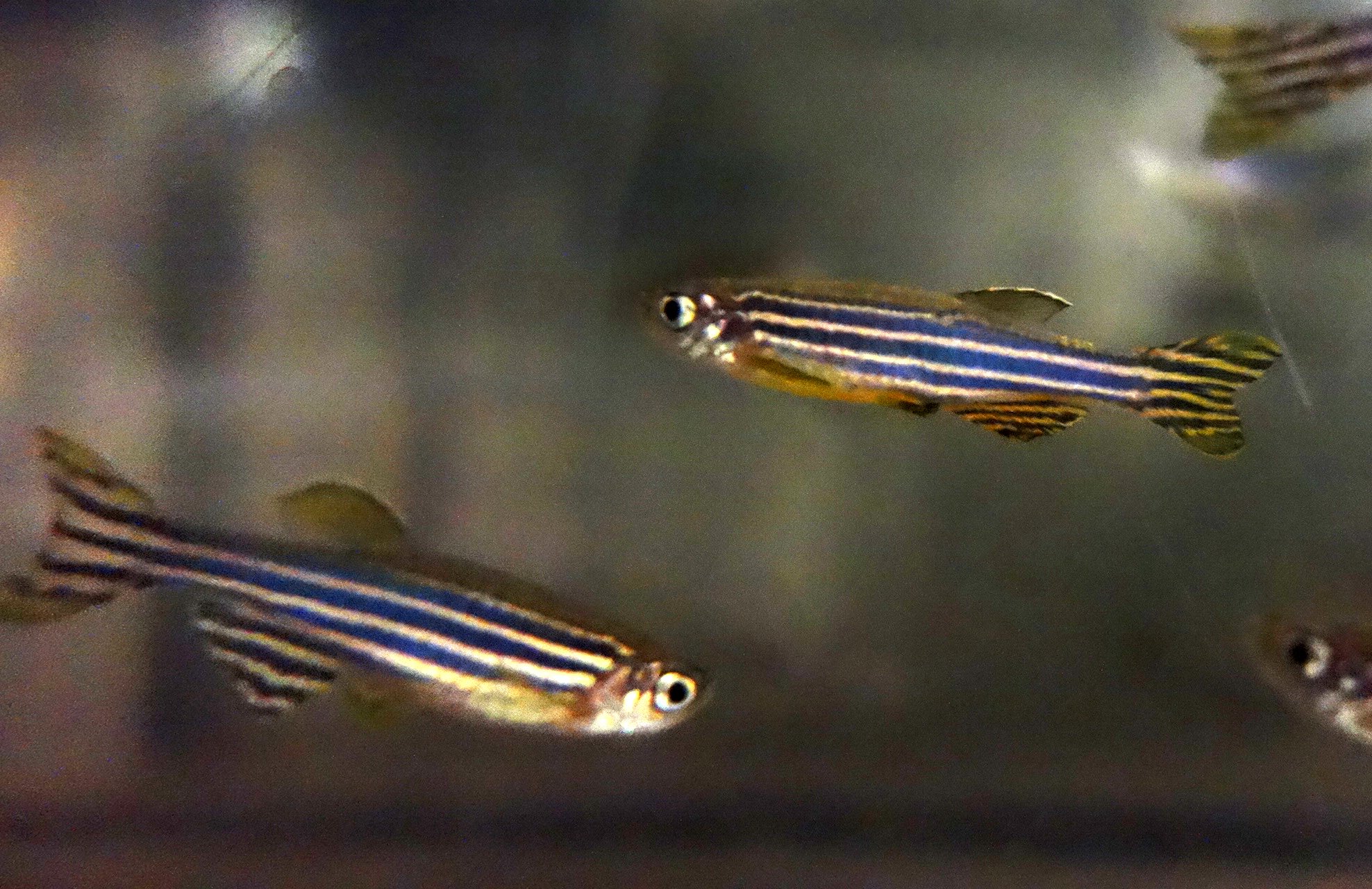
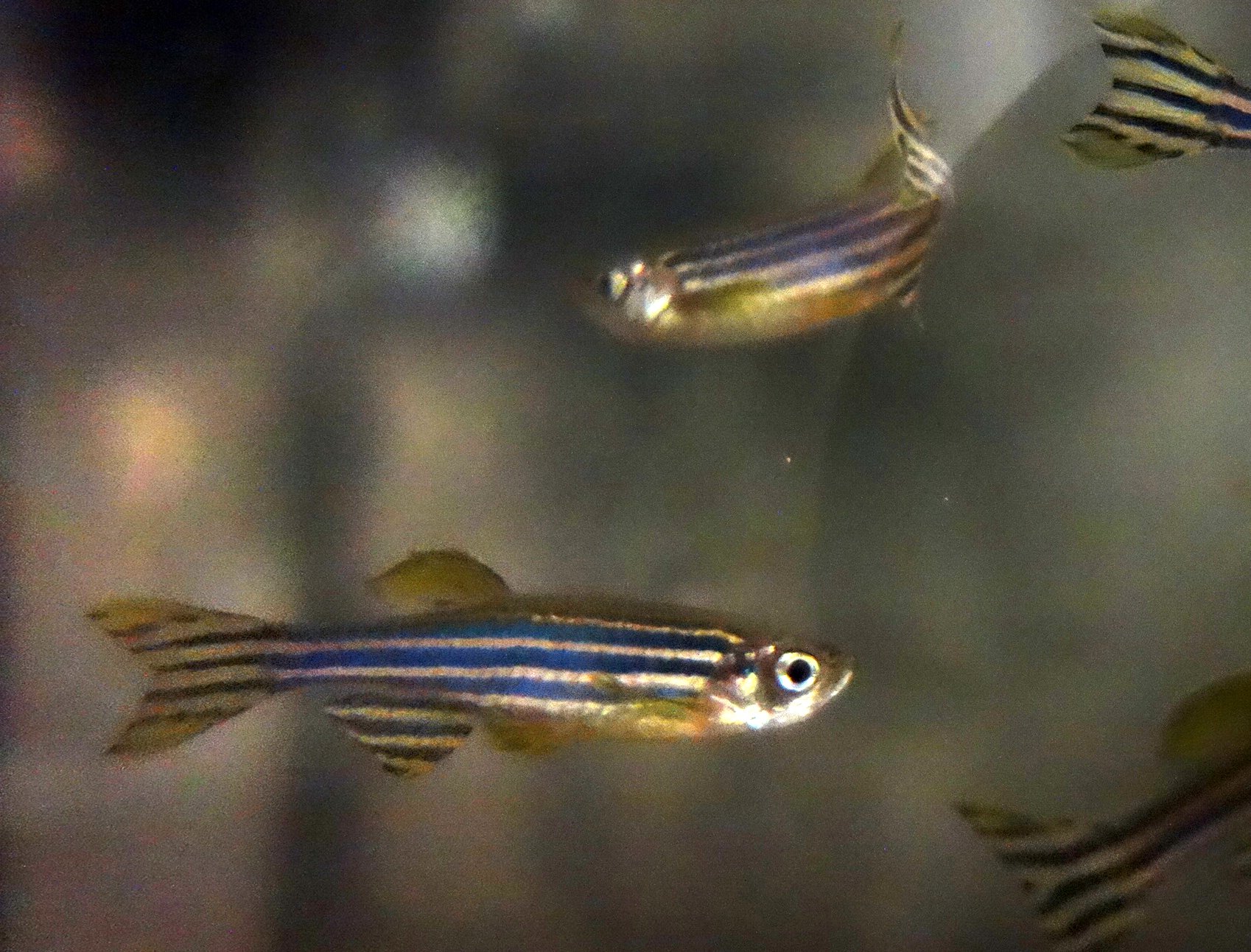
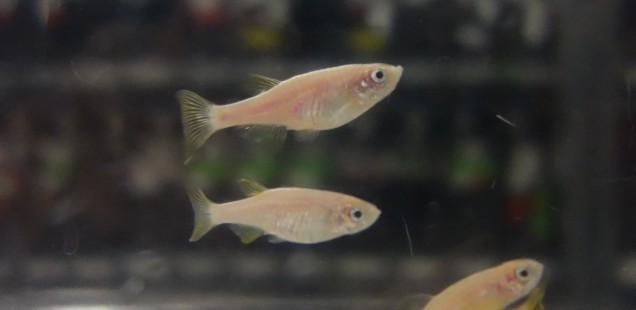 nacre homozygote fish that lack melanophores.
nacre homozygote fish that lack melanophores.
Fish tanks in Kawakami lab at the National Institute of Genetics (NIG)

